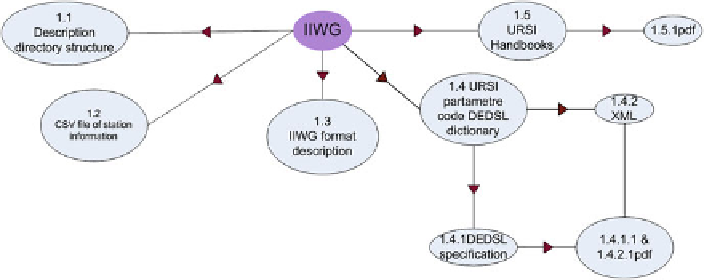Information Technology Reference
In-Depth Information
14.11.5 Example Modelling Case Studies
In this report we detail the application of network modelling of two further preser-
vation scenarios for atmospheric science data held by the STFCs World Data
Centre.
14.11.5.1 IIWG - Ionosonde Parameter Extraction
The first scenario is concerned with supporting and integrating a solution into the
existing preservation practices of the World Data Centre, which means creating
a consistent global record from 252 stations by extracting a standardised set of
parameters from the Ionograms produced around the world. The stated preservation
objective is that:
a user from a future designated community should be able to semantically
understand the following fourteen standard Ionospheric parameters from the
data for a given station and time. They should also be able to structurally
understand the values that these parameters represent
.
F
min,
foE' h
_
E
,
foes
h
_
Es,
type of
Es, fbEs, foF
1,
M(
3000
)F
1,
h
_
F, h
_
F
2,
foF
2,
fx , M(
3000
)F
2.
The network modelling process has provided the RepInfo network of information
objects and their relationships shown in Fig.
14.16
.
Fig. 14.16
Network model for understanding the IIWG file parameters
The information objects and their relationships found in the model are detailed
below:
•
1.1 A very simple description of the IIWG directory structure
•
1.2 A CSV dump of parameter values from the PostgreSQL database, this was
validated by comparing the content of file to output from the current system
http://www.ukssdc.ac.uk/gbdc/station-list.html
. Original content collected and
validated by the archivist for World Data Centre (for solar terrestrial physics)
based at RAL.
•
1.3 The original IIWG format description which can be found at
http://www.
ukssdc.ac.uk/wdcc1/ionosondes/iiwg_format.html,
this was not deemed as an

